Japan became the heir apparent to Germany in the 1970s in terms of innovation and quality of cameras. Not surprisingly, they spent decades learning and copying from the Germans. But production, innovation and quality could be cheaper and ultimately better in Japan. Mamiya has been one of the best students of the German class. The legendary C3 is a good example in this review.
The Mamiya C3 is large and heavy. A 6×6 medium format TLR camera of exceptional quality. Sturdy and stubborn. Mamiya has always been the odd man out, even in Japan. They built differently and wanted to compete with those other big brands in Japan: Nikon, Canon, Minolta. That led to numerous exceptional cameras, including the C-TLR series, but also the famous RB67 and the Mamiya 6. All of them are sought-after cameras for the professional audience.
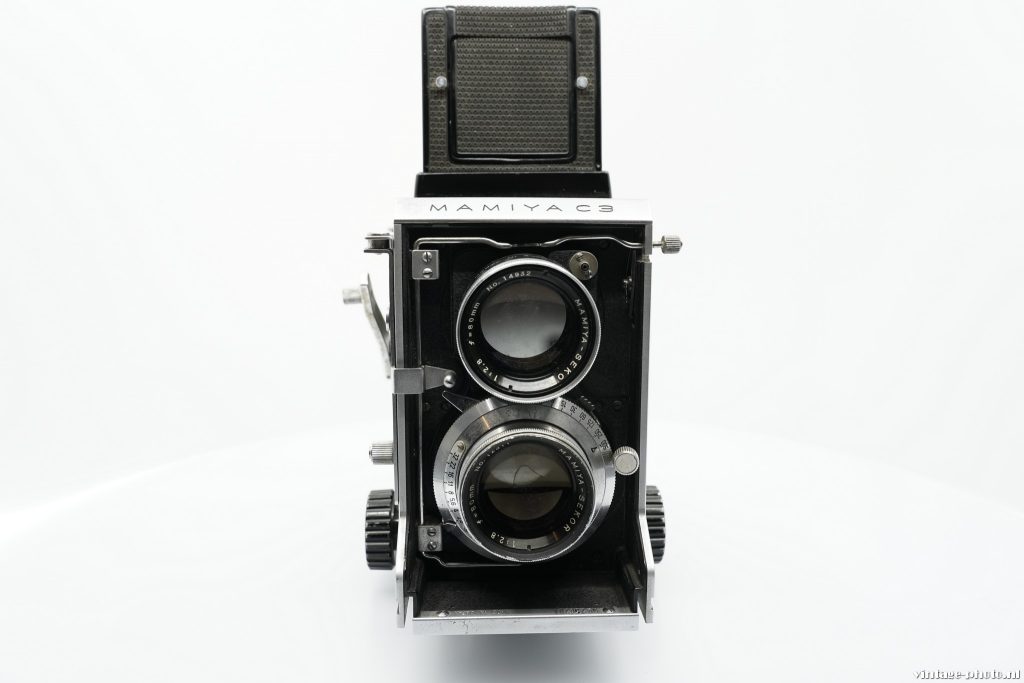
A Twin Lens Reflex works with a takeup and a viewfinder lens. The lower takeup lens makes the actual picture, the upper lens is used to focus. A principle that Rollei in particular became known for (Rolleiflex/Rolleicord). The image is projected in a large 1:1 format through the mirror to the ground glass. Focusing is done by moving the bellows (with lenses) from infinity to near. The C3 even achieves a “macro” minimum distance about 20 centimeters.

The lenses are together mounted on a metal plate and can be interchanged with the 55, 65, 80, 105, 135, 180 and 250 MM lenses. Each focal distance comes as a set with two identical lenses by the way. So also the viewing lens is of the same quality as the recording lens. For this mamiya C3 review I could fortunately exchange the bad lens parts of the takeup lens with those of the viewfinder lens. Furthermore, Mamiya has wisely chosen a leafshutter system. Each lens has its own shutter, the Seikosha-MX, the Japanese Compur. An excellent and indestructible shutter. The fastest shutter speed is 1/500s. Even though these shutters may become sticky over time, they are very easy to service (yourself). A drop of oil on a cotton swab will quickly bring them back to life and on top of that, and that goes for the whole C3 camera, everything is easy to disassemble.
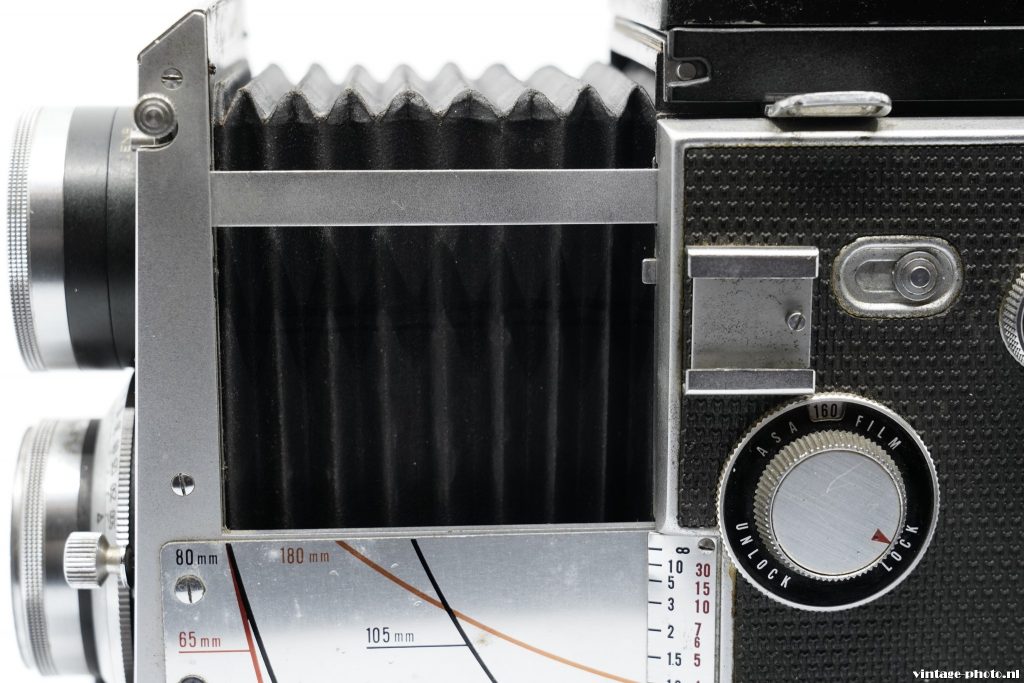
Shutter tensioning is not linked to film transport. So this must always be done manually on the lens. The crank on the side only takes care of the film transport, but it has its own counter and stops automatically before the next shot. Looking through the red window at the back is therefore not necessary, but possible. Furthermore, there is a possibility to use filmsheets by setting the camera from 120 film to sheets. This itself is not so interesting (why sheets?), but it does offer the great advantage of making double shots, because the shutter protection is lifted after taking a picture. On the other side is an interesting possibility to lock the camera or rather cover the takeup lens to change lenses when there is a film in the body. This button can also be used to set the light sensitivity.
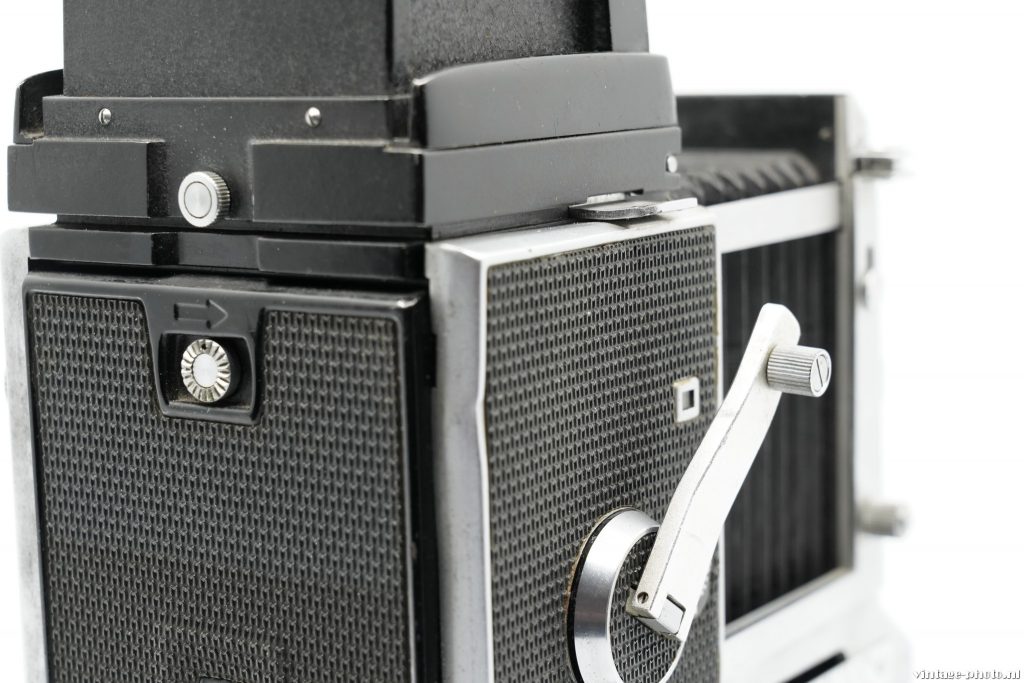
On the back, the filmback can be opened via a button that controls opening, closing and fusing. Inserting the film is very intuitive and because the film does not have to make a turn (as with the Rolleiflex), the film winds tightly across the shooting window. A great advantage for perfectly sharp photos. It is possible to use flash on the C3, thanks to the leafshutter that allows synchronization with all shutter speeds via the PC sync port on the lens. Changing lenses? First “lock” the camera so that the recording lens is covered from the inside, then slide the security lever back, remove the lens block. It is not screwed on, but is clamped into the recesses on the body by a clamp.
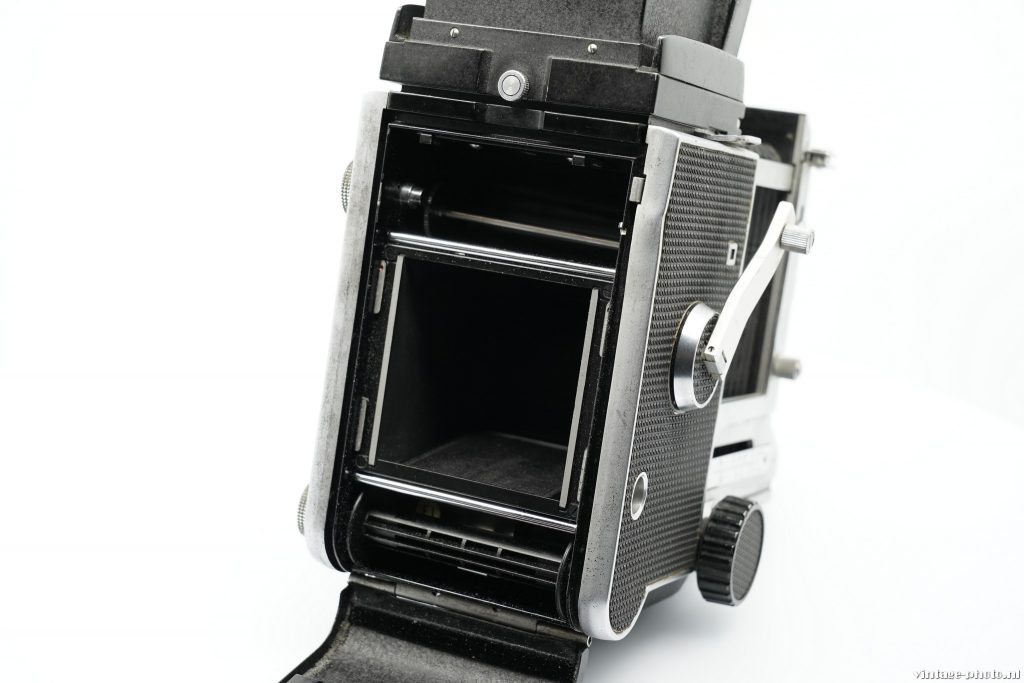
The viewfinder on top of the camera folds out automatically and provides a clear image. The magnifier can be used for fine-tuning focus. This waist level viewfinder can be replaced by the ‘Porroflex’ for eye level viewing.
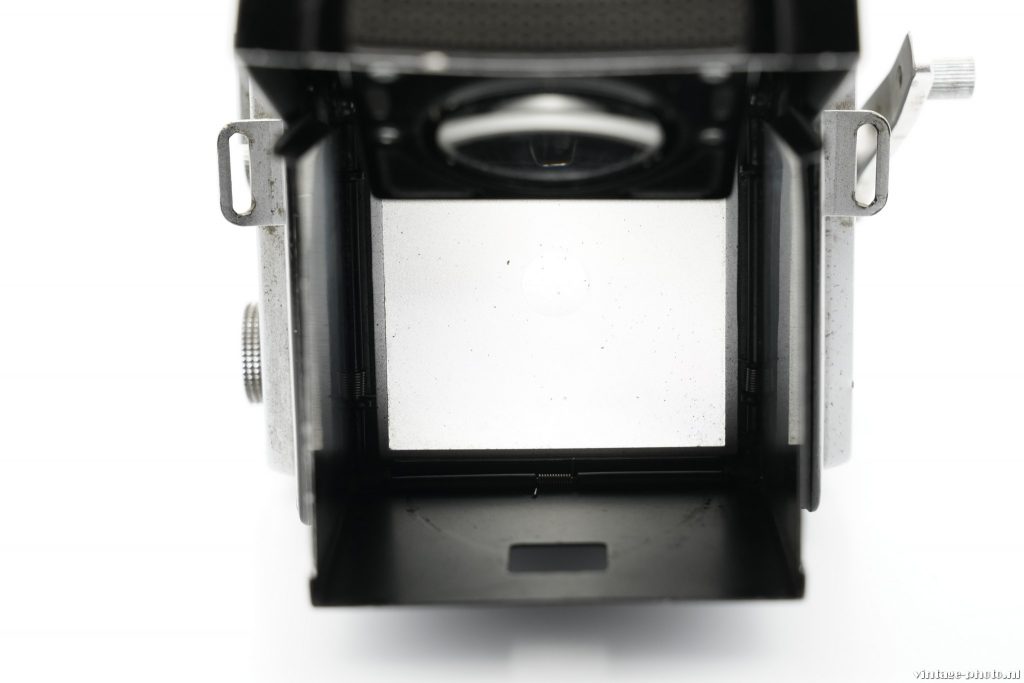
But be aware, as the distance between lens and the film increases by sliding out the bellows, the brightness decreases and needs to be adjusted. The right compensation values for each lens is noticed on the side of the bellows. And there is of course the famous parallax effect. You are focussing with the upper lens but taking the picture with a lower positioned lens. On the grounglass two horizontal lines will guide you with the correct focus with near objects. The original manual, as always uploaded by Mike Butkus comes in handy here. The C3 is a wonderful camera to work with. Uncomplicated, logical and yet just a bit quirky, truly Mamiya. The lenses are of very good quality, as is the body. German quality from Japan.



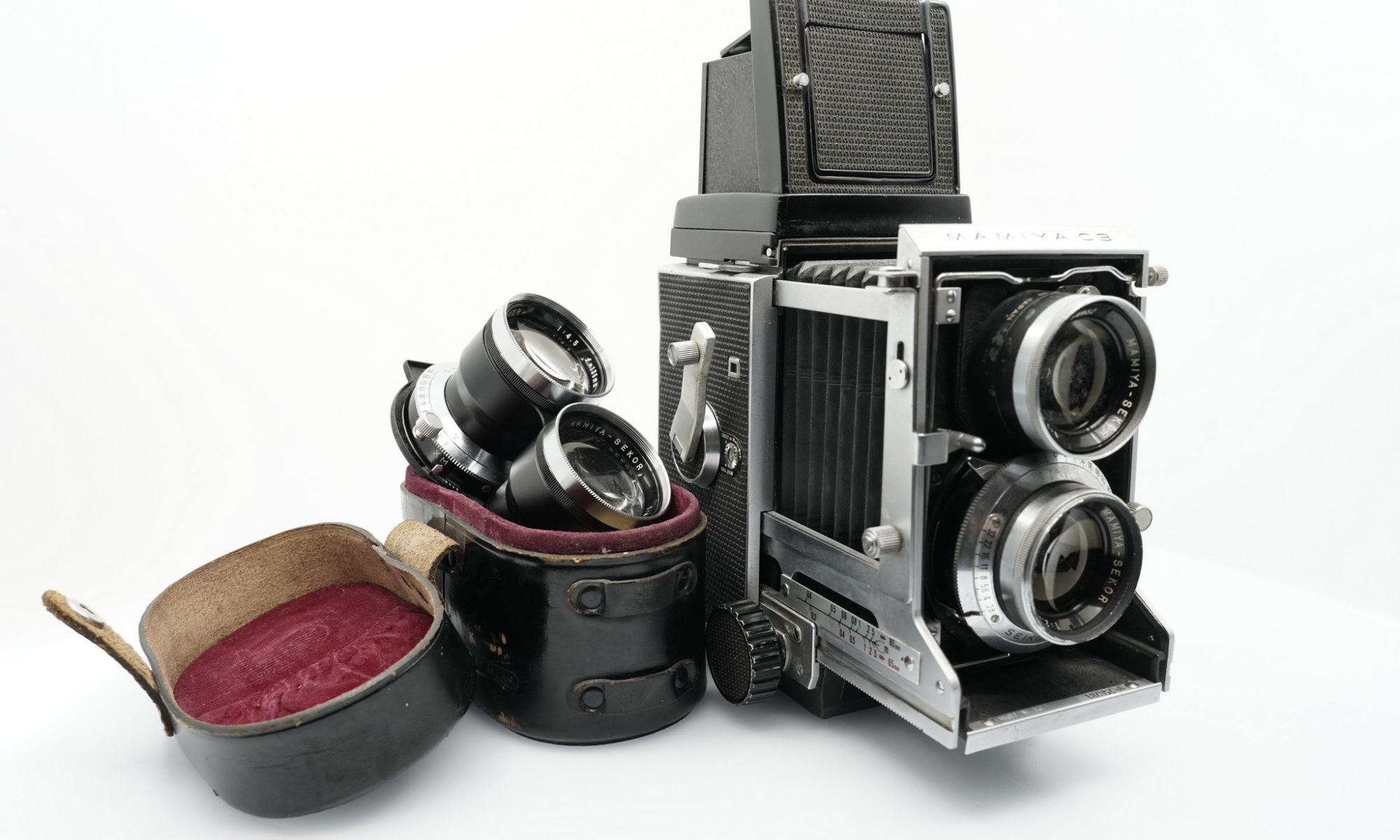
I love and use these cameras. So much more versatile than the Rolleis.
You can still find a near mint C3 on eBay for under $300 all day. I just purchased one from a seller in Japan and it’s mint. $260 + $30 for shipping. It came with a 105mm lens, but I also ordered an 80mm and will eventually collect them all. So much better than the Rolleis and for a fraction of the price.
As a cash strapped student, I bought a Mamiya C220 in the 1970s instead of the RB67 I really wanted. Along with larger and heavier C330, the C220 is the final camera in the Mamiya twin lens series. I am glad I took the route I did. I was able to build a complete medium format system at a relatively inexpensive price. I bought the 55mm, 80mm and 135mm lenses, the porrofinder (a light mirror finder that acts much like a pentaprism), the paramander (a device for extreme close-up that adjust for parallax) and various hoods and filters.
All this was within the price point a student could afford on a part time job. Now in 2022, I still have the complete system in a compact case and use it often. The best thing is that it so light. The C220 is small, light and easier to handle than the larger C330, let alone the massive RB67. The camera is so flexible with its bellows that essentially there is no photographic challenge that it can’t do. The heavier C330 does automatic cock the shutter when the film is advanced, but I have gotten so use to cocking the shutter on the C220 while advancing the film that it has become second nature and I don’t even think about it. A real classic of the photographic world.